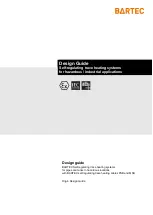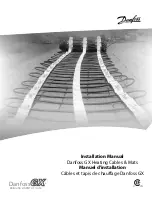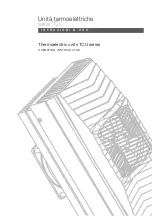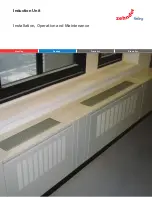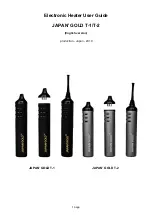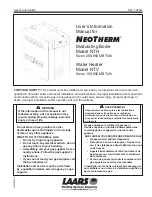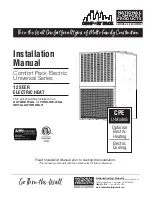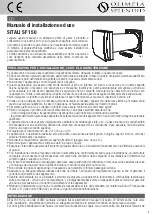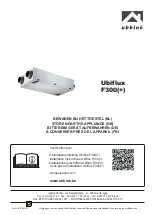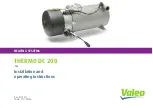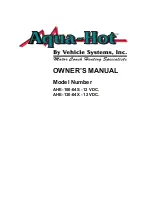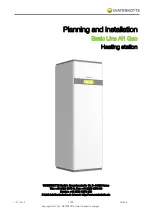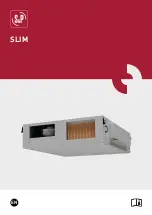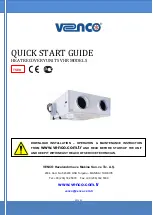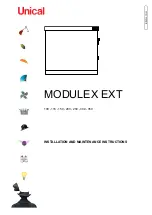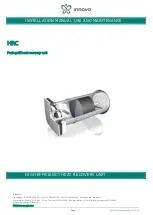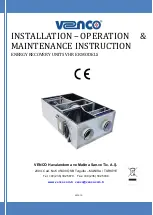
4
ISOTHERM-IM-DE-W-UK-01-2021-Rev0 | Part no. 10019091
EN
ENGLISH
3 Construction
1
3
5
4
2
B
D
C
A
Fig. 3-1: Construction
1
Circulation pump
2
Thermostatic mixing valve with setting hand wheel
3
Thermometer
4
Bypass
5
Temperature limiter
A
Primary supply (1" male thread)
B
Primary return (1" male thread)
C
Surface heating/cooling supply (1" union nut)
D
Surface heating/cooling return (1" union nut)
4 Function
The mixing valve (2) is designed as a proportional controller
and operates without auxiliary energy. The thermostat situ-
ated directly in the medium is in continuous contact with the
supply temperature at all times. The current supply temper-
ature is displayed on the thermometer (3). Deviations from
the target value result in an immediate change in valve stroke
and, accordingly, a change in the volume of the hot water
injected from the primary supply (A).
The injected water volume is mixed with the return water from
the manifold (D) at the inlet to the circulation pump (1) and, in
this way, keeps the supply temperature constant within a nar-
row temperature range.
The mixed medium is distributed via the circulation pump (1)
to the supply of the surface heating / heating circuit manifold
(C) and from there to the connected heating circuits as well
as being routed as a pilot flow via the bypass (4).
In the event of malfunction, the temperature limiter (5) switch-
es off the circulation pump to prevent overheating of the sur-
face heating system.
5 Technical Data
Hydraulic performance data
Max. operating pressure
6 bar
Max. ambient temperature
40 °C
Max. operating temperature
90 °C
Heating demand
up to 15 kW at ∆T=10K
Media
Water/water-glycol mixture
as per VDI 2035/ÖNORM
(Austrian standard) 5195
Setting range of supply
temperature
1)
30 - 50 °C
45 - 60 °C
Factory pre-setting of
target supply temperature:
44 °C
55 °C
Factory pre-setting of
the temperature limiter:
55 °C
65 °C
1) There are two versions of Isotherm with 2 control ranges depending on the version
of the mixing valve.
Connections to pipe network
Primary (heat generator)
1" male thread, flat sealing
Secondary (heat distribution)
1" fl. (union nut), flat sealing
Toques of the fitting
¾"
35 Nm
1"
55 Nm
Materials
Fittings
Messing CW617 N
Pipe parts
Messing CW508L
Seals and O-rings
AFM34/2 and EPDM
Plastics
Impact resistant and
temperature resistant
Circulation pump and temperature limiter
Technical data can be found in the enclosed technical
documentation.











